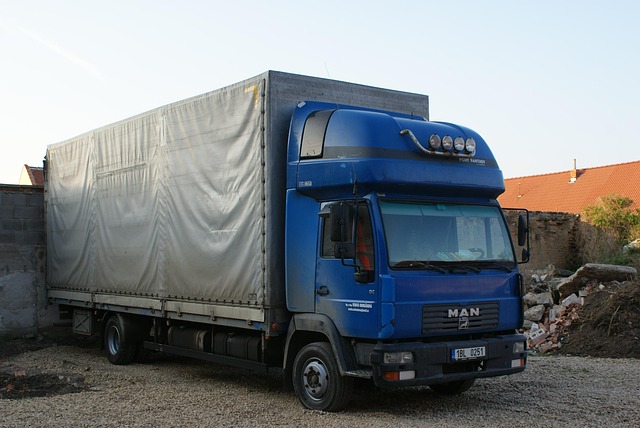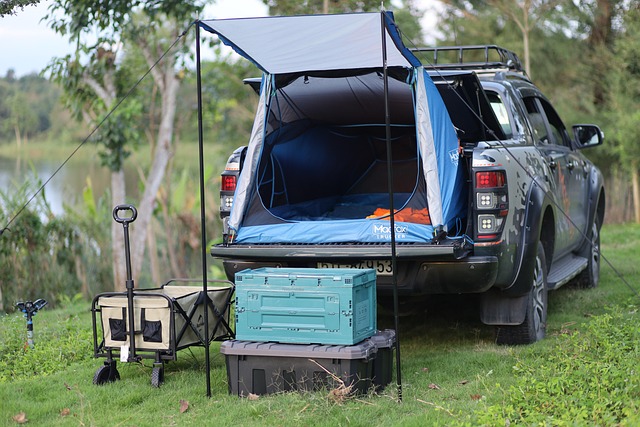Looking to register your car in California? This comprehensive guide walks you through the entire process, ensuring a smooth experience. From understanding the necessary requirements for car registration in California to gathering all the essential documents and even performing a DMV VIN verification, we’ve got you covered. By following these steps, you’ll be on your way to securing your vehicle’s registration in no time.
- Understand Requirements for Car Registration in California
- Gather Necessary Documents for DMV Visit
- Perform Vehicle Identification Number (VIN) Verification
- Complete Application Process at the Department of Motor Vehicles (DMV)
- Pay Registration Fees and Receive Your License Plate
Understand Requirements for Car Registration in California

Before registering your car in California, it’s crucial to understand the requirements set by the Department of Motor Vehicles (DMV). One key step is ensuring your vehicle meets all safety and emissions standards. This includes a thorough inspection that verifies the Vehicle Identification Number (VIN) and checks for any outstanding issues or recalls.
In California, you’ll typically need proof of insurance, a completed registration application, and the proper fees. Additionally, a mobile VIN inspection or mobile vin verifier can be helpful to ensure everything is in order, especially if you’re buying a used car. This process allows you to verify the vehicle’s history and identify any potential issues, making the registration process smoother and safer.
Gather Necessary Documents for DMV Visit

Before heading to the DMV, ensure you have all the required documents. This includes your vehicle’s registration paperwork, proof of insurance, and identification documents like a driver’s license or state-issued ID. Additionally, for out-of-state transfers, you’ll need a ‘Certificate of Title’ from the previous state. The ‘Vehicle Identification Number (VIN)’ verification is a crucial step in the process, often required by law enforcement and vehicle history reporters to confirm the authenticity of your car’s details.
Consider utilizing services like mobile vin inspection or a vin verifier for convenience, allowing you to complete this task without visiting the DMV directly. This can save time, especially if you’re busy with other commitments. A simple online search for ‘vin inspection’ in California can guide you through these options and ensure a smoother registration process.
Perform Vehicle Identification Number (VIN) Verification

Before registering your car in California, performing a Vehicle Identification Number (VIN) verification is a crucial step. This process ensures that your vehicle’s details match the information on record and helps prevent fraud. You can conduct this check through a DMV vin verification or opt for a convenient mobile vin inspection. During this inspection, a trained professional will verify the VIN by checking the vehicle’s physical components against the data in the DMV database.
A vin inspection is an effective way to ensure your car’s registration process goes smoothly. It’s particularly beneficial if you’re buying a used car, as it can reveal important information about the vehicle’s history and any previous accidents or damages. By completing this verification, you’ll have one less hurdle when registering your car with the California DMV.
Complete Application Process at the Department of Motor Vehicles (DMV)

To complete the car registration process in California, you’ll need to visit your local Department of Motor Vehicles (DMV) office. Here, you’ll fill out an Application for Title and Registration form, which requires providing detailed information about your vehicle, including its make, model, year, and unique Vehicle Identification Number (VIN). This VIN is a critical component of the registration process, as it allows the DMV to conduct a thorough vin verification, ensuring that your car matches the details on record.
At the DMV, you’ll also be responsible for submitting essential documents such as proof of insurance, identification, and any necessary fees. A mobile vin verifier or a vin inspection can be helpful in some cases, especially if you’re unsure about specific requirements. However, these aren’t always mandatory, and most information needed for registration can typically be gathered through the standard application process and VIN verification by the DMV.
Pay Registration Fees and Receive Your License Plate

After completing your vehicle’s registration application at the DMV or online, the next step is to pay the necessary fees. These fees include the registration cost and a vehicle identification number (VIN) verification charge. The VIN is a unique code that identifies your car, and its verification ensures accurate record-keeping by the California Department of Motor Vehicles (DMV). You can opt for a traditional in-person payment or choose to pay online using a secure method. Once your payment is processed, you’ll receive confirmation and your license plate assignment details.
A mobile vin verification service might be worth considering if you prefer convenience. These services allow you to get your VIN inspected remotely, ensuring a smoother registration process from the comfort of your home or even while you’re on the go. This modern approach aligns with California’s commitment to efficient vehicle registration procedures.
Registering a car in California involves understanding the state’s requirements, gathering essential documents, and completing a straightforward application process at your local DMV. After verifying the Vehicle Identification Number (VIN) through the mandatory DMV VIN verification, you’ll pay the necessary registration fees and receive your license plate, ensuring your vehicle is legally compliant on California roads.



